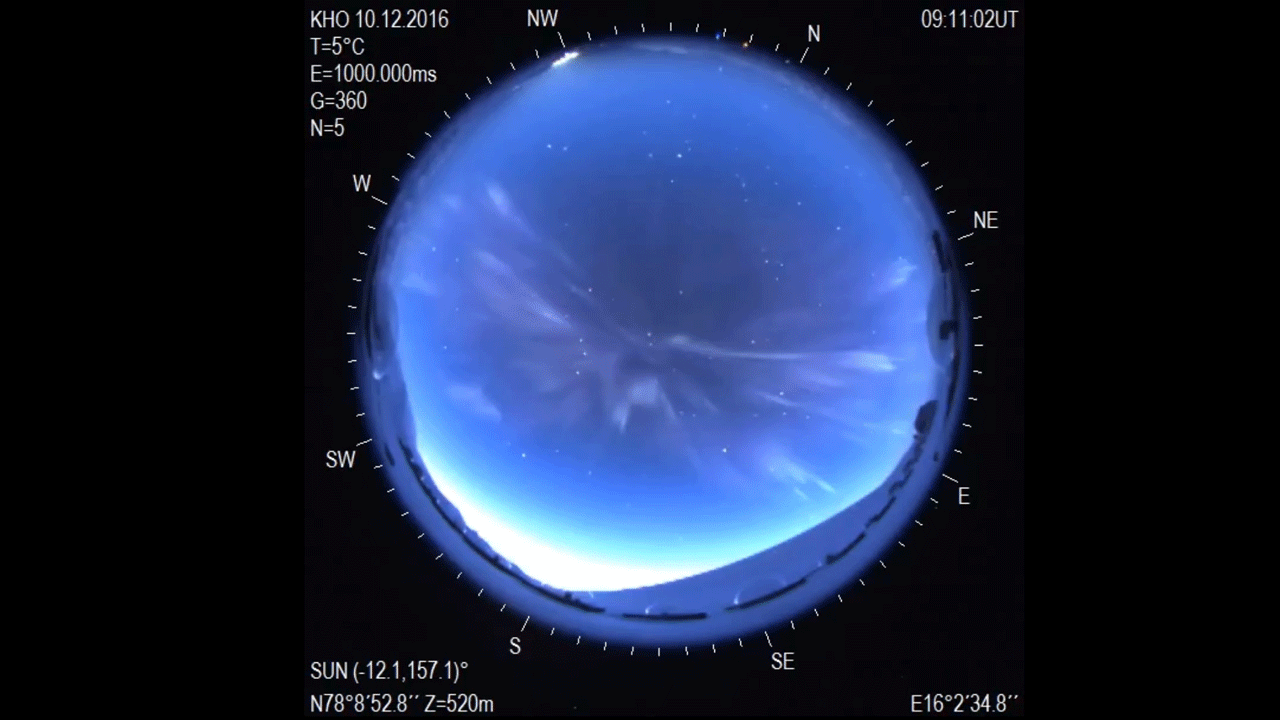Scientists Present Best Images Yet of Ionosphere From Space
By Elizabeth Howell 8 hours ago

A strange spiralling aurora, as seen by an all-sky camera in Norway.
(Image: © Fred Sigernes/Kjell Henriksen Observatory, Longyearbyen, Norway/Joy Ng)
Fresh findings about the edge of Earth's atmosphere are puzzling scientists affiliated with two missions that launched this year, and then some.
This zone, at an altitude of roughly 50 to 400 miles (80 to 645 kilometers), is full of strange physical phenomena that scientists are only beginning to understand. In the ionosphere, charged particles released by the sun interact with gases at the top of Earth's atmosphere in intriguing ways.
Take, for example, the "aurora seashell." During a NASA internship, Jennifer Briggs spotted images of an Arctic aurora, or northern lights, that had a strange spiral. This whirlpool suggested a large disturbance in the magnetosphere, which is the zone bordering the ionosphere. Weirder still, the sun did not release any eruptions before the disturbance.
GOLD has made several discoveries in the past year. For one, it showed scientists that when a solar storm hits Earth, atomic oxygen becomes more common at low latitudes and rarer at high latitudes. At the same time, molecular nitrogen prevalence does the opposite, decreasing at low latitudes and increasing at high latitudes.
More:
https://www.space.com/ionosphere-science-roundup.html
